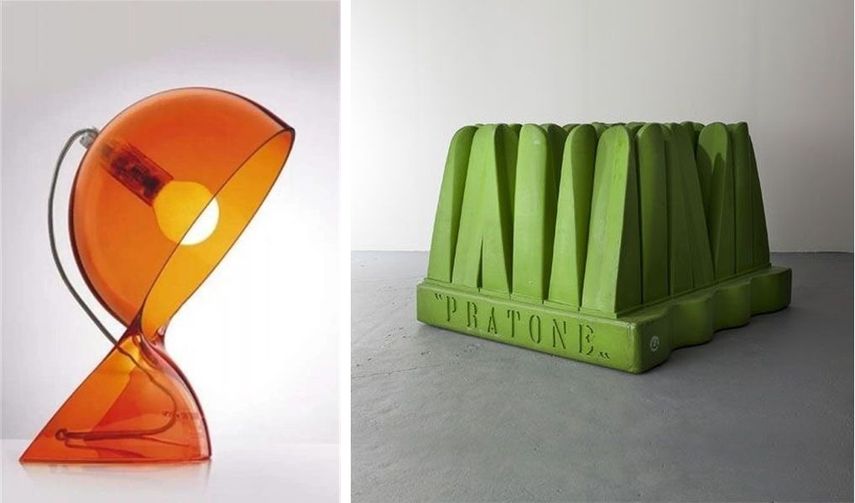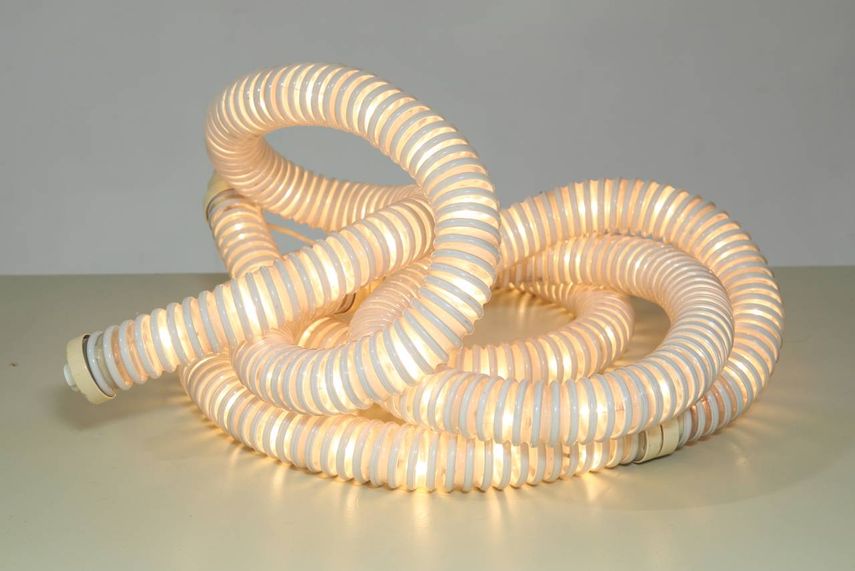Anti-Design Movement - Aestheticism of the Modern Era
The 20th-century design was greatly dominated by the modernist philosophy and ideas. That was up until a new approach to design took a stance against everything modernism stood for – it was the so-called Anti-design movement that emerged in Italy during the 1960s. In terms of architecture, it is often referred as the Radical Design period. As a loose collection of ideas that emerged in the early 20th century, Modernism responded to sweeping changes in technology and society. It managed to strip down decorative elements and focus on the design of the object in order to save time, money, material and labor. Capturing timeless beauty in spare precision, modernist designers believed that the form should follow function. Thus, the great emphasis was placed on the style and the aesthetics of good form. Aiming for functionality, simplicity and the reduced colour palette, modernists wanted to make objects that would fit in with the modern lifestyle and be useful, but unobtrusive. All of these principles were turned upside down when Anti-design took the stage.

The Cultural and Political Role of Design
The Anti-design movement emerged as a criticism of consumer culture and the comment on the excesses of Italian design and the continuous drive for novelty. The proponents of this new tendency were dissatisfied with the widespread diminution of the social relevance of design at the expense of capitalist enterprise. The group rejected the formalist values of the neo-modern design in Italy aiming to renew the cultural and political role of design. As Italian design had always been characterized by philosophical, political and socially critical consciousness and cultural awareness, this new approach advocated a fresh new look at the design process, while having the awareness of the political conditions in the consumerist society. They protested against fetishes of consumption and objects, but also against the established principles of design.

Anti-Design As Anti-Modernism
Reacting against the emphasis that was placed on the style and the aesthetics of form, which many avant-garde designers described as the impoverished language of Modernism, Anti-design embraced various exaggerated and expressive qualities to undermine the purely functional value of an object. As conventional Italian design of the period was seen as the pinnacle of good taste and elegance, they wished to question these concepts of taste and ‘good design’. While Modernist palette was generally muted and consisted of black, whites and greys, Anti-design introduced striking and bold colours. Instead of the integrity of material properties, they embraced ornamentation and decoration. Arguing that the Modernist idea of 'the perfect form' that follows a function cannot be reached, their designs were characterized by kitsch, irony and the distortion of scale. The function of their works was to subvert the way you thought about the object. These pieces were meant to stand out for their bizarrity and to be looked at and enjoyed. While Modernism perceived objects as durable and permanent pieces of art, they rebelled against this by making objects that should be temporary and easily discarded over something new and more functional as trends move. Seemingly, this would mean more consumerism, but Anti-designers wanted to make people think about the object they were buying. Ettore Sottsass wrote: 'I don't understand why enduring design is better than disappearing design...' It wasn’t until the 1966 and the Ettore Sottsass exhibition in Milan that this rebellion against modernist design became a coherent movement.

Anti-Design Key Artists and Studios
Ettore Sottsass Jr, a designer at the start of his career at the time, was a key spokesman for the Anti-Design once it took off and grew in popularity. As a father of the movement, he had already adopted the forms of Pop Art. Among his early works is a series of cupboards produced in 1966. Made of plywood and covered with deliberately tacky plastic laminates to undermine the stern form, these cupboards looked like strange monoliths. The Radical Design groups Archigram and Superstudio were also loud advocates of the movement. Torealdo di Francia of the Superstudio wrote that the designer must ‘attempt to re-evaluate his role in the nightmare he has helped to conceive’. The Studio Alchymia turned to banal, everyday objects of mass culture into design. All of these studios designed furniture prototypes and exhibition pieces expressing ideas that are still considered revolutionary even today.
In 1972, the MoMA in New York held an international exhibition Italy: The New Domestic Landscape that focused on the radical Anti-Design movement. Some of the artists exhibited were Vico Magistretti, Gianfranco Frattini and Livio Castiglioni, Enzo Mari, Piero Gilardi, Ettore Sottsass and Paolo Lomazzi. These artists were very active in the movement until its end in the 1980s. Another prominent figure was also Alessandro Mendini whose most famous pieces are Meligete cabinet and Atomaria lamp produced for the Studio Alchymia.

Memorable Design Pieces
As Anti-Design was preoccupied with space and storage, they often tried to make designs that were collapsible or stackable and easy to store. One of these designs was Magistretti’s The Selene chair made from reinforced polyester. It was the first stackable plastic chair, a design we today perceive as very common. As Modernist designers were often treated as heroic figures, Anti-design tried to challenge this by allowing the owner to participate in the design to some extent. This was the case with the Boalum flexible lamp by Gianfranco Frattini and Livio Castiglioni. Consisted of a long plastic tube with light bulbs wired inside, its shape was indeterminate and the owner could manipulate it any way he liked. Another example is a Reversible Vase by Enzo Mari. Made from the ABS plastic, it could also be used upside down. These designs demonstrated manoeuvrability and flexibility that were compatible with the modern lifestyle. Another famous piece by Piero Gilardi called I Sassi is a chair made of polyurethane in the shape of a rock. As the quality of the rock is in contrast with the way we expect a chair to be, its functionality was illegible. Anti-Design often suggested that form doesn’t have to be invented, but also recycled. Lomazzi’s famous Joe Sofa is designed like a giant baseball catcher’s mitt. Mendidi often took iconic chairs by Modernist designers, such as Wassily Chair by Marcel Breuer or the Zig Zag chair by Gerrit Rietveld, and added decoration without changing or improving their function. This resembles the concept of the readymade first introduced by Marcel Duchamp.

The Memphis Group
By the second half of the 1970s, the movement had dissolved and disbanded and Italian avant-garde design stagnated in uncertainty until the beginning of the 1980s. Continuing on the ideas of the Anti-design movement, Ettore Sottsass gathered a group of young Milanese architects and designers. They wanted to pursue an ironic approach to design in which surface decoration was paramount. The group drew inspiration from Art Deco, Pop Art and 50s kitsch. The designers adopted the name Memphis after the Bob Dylan’s song Stuck Inside of Mobile with the Memphis Blues Again that played during one of their meetings. They had no official manifesto, and as the design critic and Sottsass’s wife Barbara Radice wrote, ‘the roots, thrust and acceleration of Memphis are eminently anti-ideological’. Still, with striking colours, the mix of high and low materials and collaged textures, shapes and uses, these pieces put the form before function. Embracing the idea of the ephemeral, they wrote: ‘We are all sure that Memphis furniture will soon go out of style.’

The Rising Interest
The excitement about Anti-Design and the Memphis Group soon flamed out, as the world got tired of the movement’s tackier tendencies. Still, this aesthetic has influenced a new generation of designers, and it seems that it is back in the spotlight. In 2010, the Anti-Design Festival was staged as part of the London Design Festival and it was led by magazine design legend Neville Brody. The works exhibited were defined as ‘non-commercial’ and employing ‘anti-design system' elements. There are numerous end-to-end retrospectives and the market for Memphis pieces is hot. This aesthetics has seen resurgence in the past couple of years. During the 2015 Milan Design Week, the manufacturer of sleek plastic furniture Kartell presented a collection of glossy sculptural furniture by Ettore Sottsass. In September 2015, the prominent New York design gallery Friedman Benda covered Sottsass’ career from 1955 to 1969. All these retrospectives and the increasing demand for pieces from this period prove that this flamboyant and extremely energetic approach to design was certainly ahead of its time.
Featured image: Quaderna Furniture by Superstudio, via anirik-01.livejournal.com; Ettore Sottsass' design, via moebeltipps.ch; Ettore Sottsass, Tappeto Volante, Flying Carpet armchair, 1974, via design-is-fine.org; Joe Colombo - Tube chair, 1969, via stylehive.com
Can We Help?
Have a question or a technical issue? Want to learn more about our services to art dealers? Let us know and you'll hear from us within the next 24 hours.
